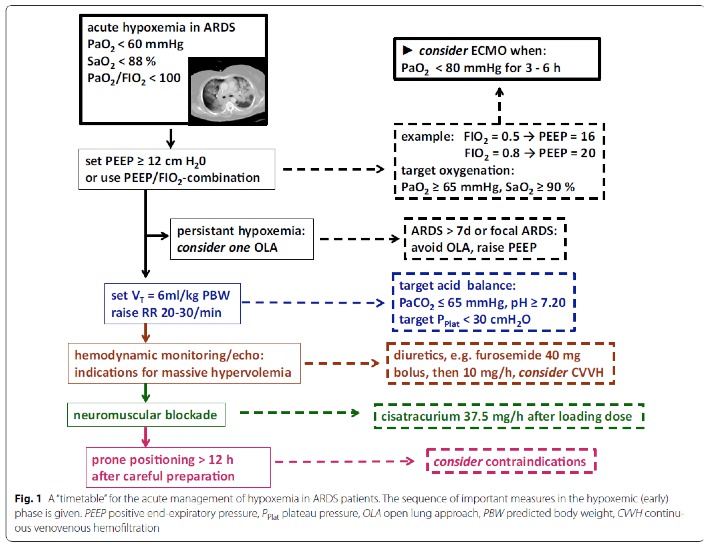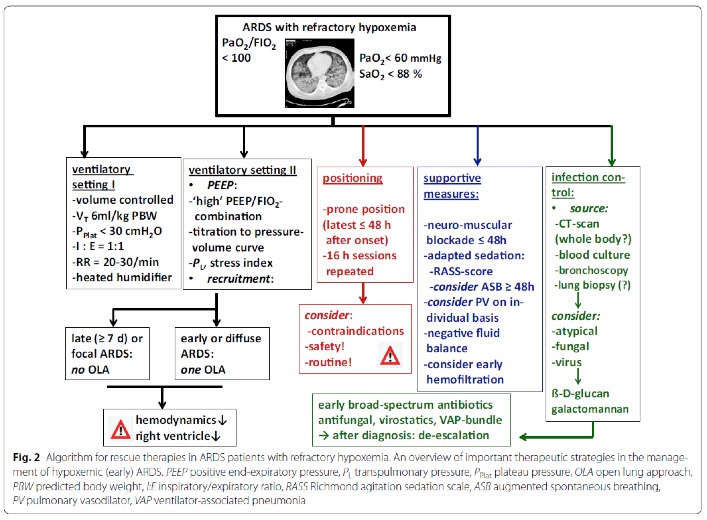Revue de Presse … Mai 2016
http://www.ncbi.nlm.nih.gov/pubmed/26827847
Journal of Pain
32 recommandations des sociétés américaines (douleurs, ALR et Anesthésie) sur la gestion de la douleur post opératoire chez l’adulte et l’enfant.
http://www.ncbi.nlm.nih.gov/pubmed/26002889
Circulation
Faut-il administrer de l’oxygène systématiquement aux patients non-hypoxémiques avec syndrome coronarien aigu ? L’evidenced-based medicine se penche enfin sur la question au moyen d’une étude randomisée multicentrique. Au-delà de l’absence de différence mise en évidence sur le critère principal (troponinémie), les résultats sur les critères secondaires sont surprenants !
Getting the timing right
http://www.bmj.com/content/353/bmj.i1952
Accès libre
BMJ
Un édito de Elizabeth Loder dans le BMJ accompagné de deux articles en accès libre concernnant la réanimation cardiopulmonaire: comment faire encore mieux dans la réanimation cardiopulmonaire ? Respectons-nous les recommendations?
Defibrillation time intervals and outcomes of cardiac arrest in hospital: retrospective cohort study from Get With The Guidelines-Resuscitation registry
http://www.ncbi.nlm.nih.gov/pubmed/27052620
Accès libre
BMJ
Timing du 2ème choc électrique externe en cas de TV sans pouls ou FV persistante
Early administration of epinephrine (adrenaline) in patients with cardiac arrest with initial shockable rhythm in hospital: propensity score matched analysis.
http://www.ncbi.nlm.nih.gov/pubmed/27053638
Dans une étude observationnelle prospective sur registre d’evaluation de l’adhesion aux recommandation aux US, la moitié des patients reçoivent (trop ?) précocement de l’adrénaline, avec un outcome moins bon ( survie, retour a une activité circulatoire efficace etc..)
http://www.ncbi.nlm.nih.gov/pubmed/27028561
Accès libre
The New England Journal of Medicine.
Une revue complète pour faire une mise au point sur ce virus qui touche les départements français d’Amérique et dont l’infection peut être associée à la survenue de syndrome de Guillain-Barré.
Tunnelling of thoracic epidural catheters is associated with fewer catheter-related infections: a retrospective registry analysis.
https://www.ncbi.nlm.nih.gov/pubmed/26994232
British Journal of Anaesthesia
La tunnelisation des cathéters d’analgésie péridurale est associée à une réduction des infections de ces cathéters.
http://www.resuscitationjournal.com/article/S0300-9572(16)00029-0/abstract
Resuscitation
Accès libre
Il y a t-il un intérêt doser le NGAL pour prédire dès l’admission une défaillance rénale dans les suites d’un arrêt cardio-circulatoire ?
Effectiveness of Prevention Strategies for Contrast-Induced Nephropathy: A Systematic Review and Meta-analysis.
https://www.ncbi.nlm.nih.gov/pubmed/26830221
Annals of Internal Medicine
Une revue systématique sur la prévention de la néphropathie aux produits de contraste iodés.
Targeting Endogenous Repair Pathways after AKI
http://www.ncbi.nlm.nih.gov/pubmed/26582401
Journal of the American Society of Nephrology
Description des mécanismes intervenant dans la réparation cellulaire au cours de l’insuffisance rénale aigue, les marqueurs de ces régénérations cellulaires, et les pistes thérapeutiques.
Kidney tubules: intertubular, vascular, and glomerular cross-talk
Current opinion nephrology
Avancées physiopathologiques rénales et la place du rétro-contrôle tubulo-glomérulaire
Glomerular cell crosstalk
http://www.ncbi.nlm.nih.gov/pubmed/27027682
Accès libre
Current Opinion in Nephrology and Hypertension
Focus sur les interactions cellulaires au sein du glomérule !
Lancet
http://www.thelancet.com/journals/laneur/article/PIIS1474-4422(16)00110-1/abstract
Plasma ou PPSB en urgence dans le contexte d’une hémorragie intra-crânienne avec surdosage en AVK ? Une réponse claire!
The Efficacy of Earplugs as a Sleep Hygiene Strategy for Reducing Delirium in the ICU: A Systematic Review and Meta-Analysis
http://www.ncbi.nlm.nih.gov/pubmed/26741578
Critical Care Medicine
Neuf études incluses, 1455 patients et un résultat : les bouchons d’oreilles pourraient bien diminuer l’incidence des épisodes confusionnels en réanimation !
Psychiatric Symptoms in Acute Respiratory Distress Syndrome Survivors: A 1-Year National Multicenter Study
http://www.ncbi.nlm.nih.gov/pubmed/26807686
Critical Care Medicine
Une étude de cohorte incluant 698 patients avec SDRA montrant que deux tiers d’entre eux présentent des symptômes psychiatriques un an après leur hospitalisation en réanimation.
http://www.ncbi.nlm.nih.gov/pubmed/27106206
Accès libre
International Journal of Obstetric Anesthesia
Une méta-analyse sur la durée du bloc moteur avec utilisation de ropivacaine ou de bupivacaine lors de césariennes.
Lancet
http://www.thelancet.com/journals/lancet/article/PIIS0140-6736(16)00340-8/abstract
Ne faut-il pas préférer les cathéters imprégnés en antibiotiques en pédiatrie? Un essai randomisé anglais!
http://www.ncbi.nlm.nih.gov/pubmed/27040102
Une mise au point sur la prise en charge du SDRA, dans un numéro d’ICM entièrement consacré au SDRA qui fête ses 50 ans !


Association between driving pressure and development of postoperative pulmonary complications in patients undergoing mechanical ventilation for general anaesthesia: a meta-analysis of individual patient data
http://www.ncbi.nlm.nih.gov/pubmed/26947624
Lancet
Une méta-analyse s’intéressant à l’intérêt de contrôler la « driving pressure » au cours de l’anesthésie pour limiter les complications respiratoires.
http://www.ncbi.nlm.nih.gov/pubmed/26866753
Anesthesia Analgesia
Comment minimiser les difficultés rencontrées lors des intubations en urgence en dehors du bloc ? Avec la surélévation de la tête ! Une belle étude rétrospective sur plus de 500 intubations aux USA.
Neck circumference as a predictor of difficult intubation and difficult mask ventilation in morbidly obese patients: A prospective observational study
http://www.ncbi.nlm.nih.gov/pubmed/26351829
European Journal of Anesthesiology
Etude prospective mono centrique canadienne évaluant un tour de cou > 42cm comme facteur prédictif d’intubation difficile.
Anatomical location of the vocal cords in relation to cervical vertebrae: A new predictor of difficult laryngoscopy?
http://www.ncbi.nlm.nih.gov/pubmed/26849245
European Journal of Anesthesiology
Relation entre la position des cordes vocales en regard des vertèbres cervicales comme critère d’intubation non difficile.
Video laryngoscopy vs. direct laryngoscopy: which should be chosen for endotracheal intubation during cardiopulmonary resuscitation?: A prospective randomized controlled study of experienced intubators
http://www.resuscitationjournal.com/article/S0300-9572(16)30014-4/abstract
Accès libre
Resuscitation
Faut utiliser un videolaryngoscope pour une intubation orotrachélale ? Pas toujours….


